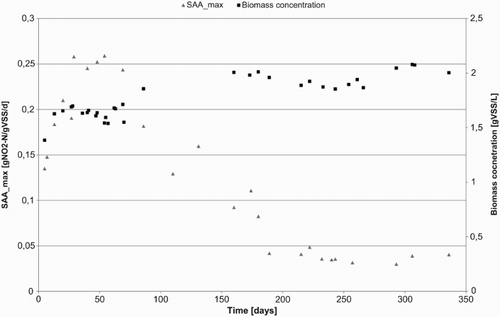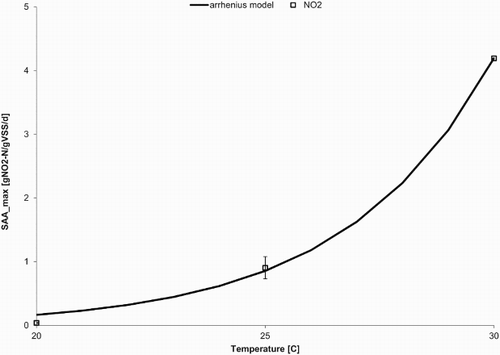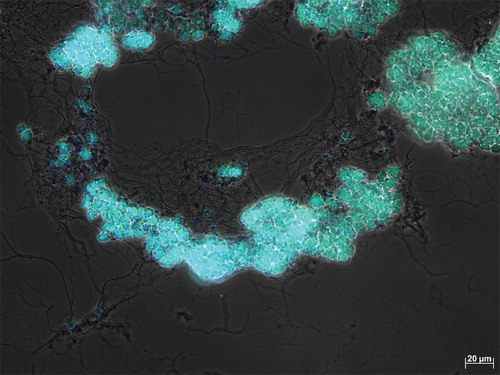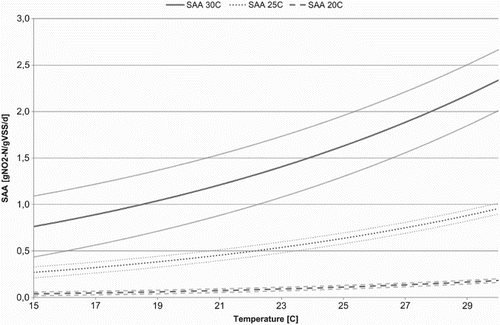Figures & data
Table 1. Reactor configurations of the enrichment reactor used in this study.
Table 2. Oligonucleotides probes used in this study for FISH analysis and primers used for DGGE.
Figure 1. Maximum specific anammox activity (SAAmax LT) during long-term cultivation of anammox bacteria in an MBR at 20°C. Biomass concentration is shown in black squares and SAAmax LT in grey triangles.

Table 3. Kinetic parameters for the anammox-enriched community obtained at three different temperatures during long-term cultivation.
Figure 2. Maximum specific anammox activity as a function of temperature after long-term cultivation at 30°C, 25°C and 20°C. Arrhenius equation is fitted (solid line) through SAAmax LT data points (open squares); the data points are averages of long-term stable reactor performance and corresponding standard deviations. The error bars of the data points at 20° and 30° are too small to be seen.

Figure 3. Microscopic phase contrast picture of floc and filamentous bacteria, during 25°C cultivation.

Figure 4. FISH picture of the biomass enriched at 20°C, hybridised with Eubacteria (blue) and AMX (BFU 613, green). Unstained side population can be clearly seen. There are a limited number of cells that are stained with the eubacteria probe and not with the anammox bacteria probe (readers are referred to the online version for colour figures).

Figure 5. Dynamic temperature experiment; biomass was cultivated at 25°C. Temperature (dashed line), nitrite samples (filled circles) and fitted nitrite concentrations based on the best estimate for the activation energy in the reactor model (solid line).

Figure 6. Temperature dependency of the specific anammox activity (SAA) as estimated from dynamic temperature experiments with biomass cultivated at 30°C (solid line), 25°C (dotted line) and 20°C (dashed line). Results are averages of multiple experiments (2 or 3) at 30°, 25° and 20°, with the combined standard deviations of these experiments as slightly transparent lines.

